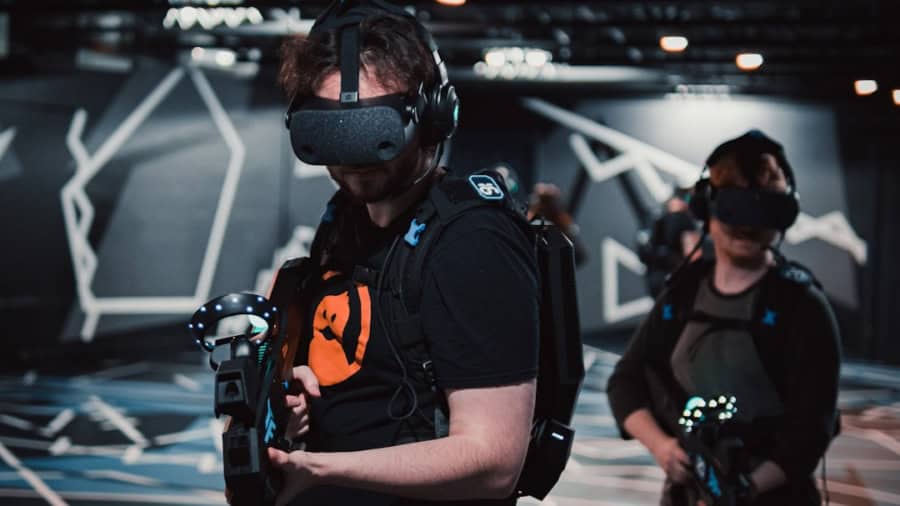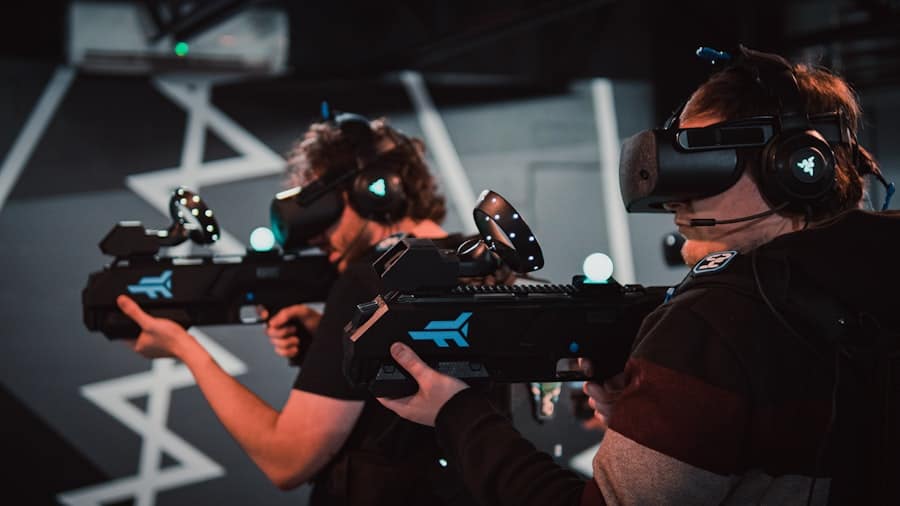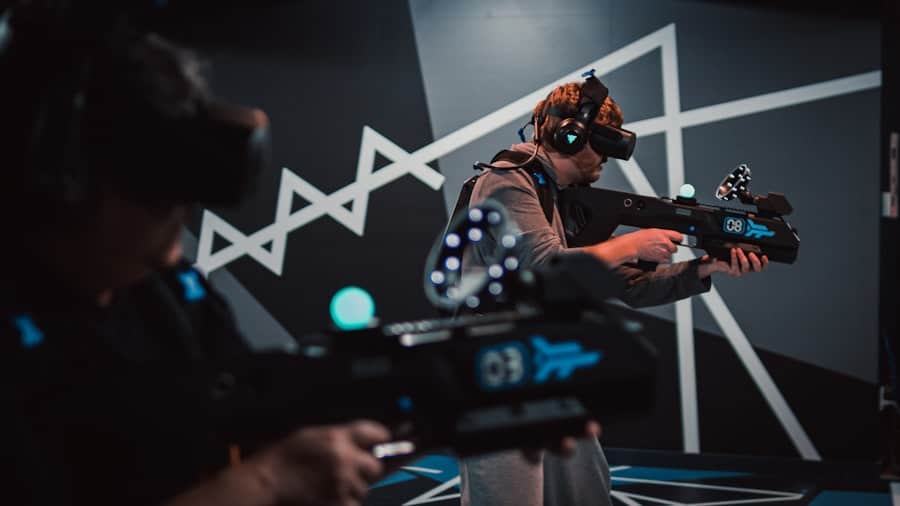Augmented Reality (AR) and Virtual Reality (VR) have emerged as transformative technologies that are reshaping the landscape of interactive experiences. While VR immerses users in a completely digital environment, AR overlays digital elements onto the real world, creating a hybrid experience that enhances our perception of reality. These technologies have found applications beyond gaming, influencing fields such as education, healthcare, and architecture.
As the demand for immersive experiences grows, so does the need for powerful hardware capable of delivering seamless AR and VR interactions. The rise of AR and VR has not only captivated gamers but has also sparked interest among developers and content creators. With the advent of more sophisticated headsets and devices, users can now engage in experiences that were once confined to the realm of science fiction.
The potential for storytelling, training simulations, and interactive learning environments is vast, making AR and VR a focal point for innovation in technology. As we delve deeper into the evolution of gaming laptops, it becomes evident that these devices are at the forefront of enabling high-quality AR and VR experiences.
Key Takeaways
- AR and VR experiences are revolutionizing the way we interact with technology, offering immersive and interactive environments.
- Gaming laptops have evolved to meet the demands of AR and VR, with powerful processors, high-resolution displays, and advanced graphics cards.
- Hardware upgrades such as high-capacity RAM, SSD storage, and powerful GPUs are essential for a smooth AR and VR experience on gaming laptops.
- Software optimization plays a crucial role in enhancing the performance and compatibility of gaming laptops for AR and VR applications.
- Design and portability are important factors to consider when choosing a gaming laptop for AR and VR, as users may need to move and use the device in different environments.
The Evolution of Gaming Laptops
Gaming laptops have undergone a remarkable transformation over the past decade, evolving from bulky machines with limited capabilities to sleek, powerful devices that rival desktop performance. Initially, gaming laptops were often criticized for their weight and poor battery life, making them less appealing to gamers who valued portability. However, advancements in technology have led to the development of lightweight materials and energy-efficient components, allowing manufacturers to create laptops that are both powerful and portable.
The introduction of dedicated graphics cards, high-refresh-rate displays, and advanced cooling systems has further propelled the evolution of gaming laptops. These enhancements have enabled gamers to enjoy visually stunning graphics and smooth gameplay without compromising on performance. As AR and VR experiences demand even more from hardware, gaming laptops are now being designed with these immersive technologies in mind.
The integration of cutting-edge processors and GPUs ensures that users can enjoy high-fidelity graphics and responsive interactions, making gaming laptops an essential tool for both casual and professional gamers.
Hardware Upgrades for AR and VR
To fully harness the potential of AR and VR experiences, gaming laptops must be equipped with specific hardware upgrades that cater to the unique demands of these technologies. One of the most critical components is the graphics processing unit (GPU). A powerful GPU is essential for rendering complex 3D environments and ensuring smooth frame rates during immersive gameplay.
High-end GPUs from manufacturers like NVIDIA and AMD are now standard in many gaming laptops, providing the necessary horsepower to handle demanding AR and VR applications. In addition to a robust GPU, sufficient RAM is crucial for multitasking and running resource-intensive applications. A minimum of 16GB of RAM is recommended for optimal performance in AR and VR environments, allowing users to run multiple applications simultaneously without experiencing lag or slowdowns.
Furthermore, storage solutions such as solid-state drives (SSDs) offer faster load times and improved data access speeds compared to traditional hard drives. This is particularly important in AR and VR scenarios where quick data retrieval can significantly enhance the user experience.
Software Optimization for AR and VR
While hardware plays a vital role in delivering immersive AR and VR experiences, software optimization is equally important. Developers must create applications that are not only visually stunning but also optimized for performance across various hardware configurations. This involves fine-tuning graphics settings, optimizing code for efficient processing, and ensuring compatibility with different devices.
The goal is to create a seamless experience that minimizes latency and maximizes responsiveness. Moreover, software development kits (SDKs) provided by major AR and VR platforms enable developers to create applications that leverage the full capabilities of gaming laptops. These SDKs often include tools for motion tracking, spatial mapping, and user interaction design, allowing developers to build rich, interactive environments.
As the ecosystem for AR and VR continues to grow, ongoing software updates and optimizations will be essential to keep pace with advancements in hardware technology.
Design and Portability
The design of gaming laptops has evolved significantly to meet the demands of modern gamers who prioritize both aesthetics and functionality. Manufacturers are increasingly focusing on creating sleek, lightweight designs that do not compromise on performance. This shift is particularly important for users who wish to take their gaming experiences on the go, whether traveling for work or attending gaming events.
Portability is a key consideration when it comes to AR and VR experiences. Users often require a laptop that can easily fit into a backpack while still providing the power needed for immersive gameplay. As a result, many gaming laptops now feature slim profiles without sacrificing essential components such as cooling systems or battery life.
Additionally, customizable RGB lighting and premium materials enhance the overall aesthetic appeal, making these devices not just tools for gaming but also stylish accessories.
The Importance of Display and Graphics
Resolution and Refresh Rates
A gaming laptop’s display quality is crucial for delivering an exceptional AR or VR experience. High-resolution screens with vibrant colors and deep contrasts are essential for creating lifelike environments that draw users into the experience. Many modern gaming laptops now offer 4K displays or high-refresh-rate panels that provide smoother visuals during fast-paced action sequences.
Enhancing Visual Fidelity
In addition to resolution and refresh rates, features such as HDR (High Dynamic Range) support can significantly enhance visual fidelity by providing a wider range of colors and improved contrast ratios. This is particularly important in AR applications where realistic lighting effects can make a substantial difference in immersion.
Eliminating Screen Tearing and Stuttering
Furthermore, technologies like G-Sync or FreeSync help eliminate screen tearing and stuttering, ensuring that users enjoy a fluid experience even during intense gameplay.
Cooling Systems for Intensive AR and VR Gaming
As gaming laptops become more powerful to accommodate demanding AR and VR applications, effective cooling systems have become increasingly important. High-performance components generate significant heat during operation, which can lead to thermal throttling if not managed properly. Manufacturers are now employing advanced cooling solutions such as vapor chambers, multiple heat pipes, and strategically placed fans to dissipate heat efficiently.
These cooling systems not only help maintain optimal performance but also contribute to user comfort during extended gaming sessions. Excessive heat can lead to discomfort for users who wear VR headsets for prolonged periods; therefore, effective thermal management is crucial for an enjoyable experience. Additionally, quieter cooling solutions are becoming more common, allowing users to immerse themselves fully in their virtual environments without being distracted by loud fan noise.
Future Trends in Gaming Laptops for AR and VR
Looking ahead, the future of gaming laptops designed for AR and VR experiences appears promising as technology continues to advance at an unprecedented pace. One notable trend is the integration of artificial intelligence (AI) into gaming laptops. AI can enhance various aspects of gaming performance, from optimizing graphics settings based on user preferences to improving frame rates through intelligent resource allocation.
Moreover, as 5G technology becomes more widespread, gaming laptops will likely leverage this connectivity to enable cloud-based gaming experiences that require minimal local processing power. This could open up new possibilities for AR applications that rely on real-time data streaming from remote servers. Additionally, advancements in battery technology may lead to longer-lasting devices that can support intensive gaming sessions without frequent recharging.
In conclusion, as AR and VR technologies continue to evolve, so too will the gaming laptops designed to support them. With ongoing advancements in hardware capabilities, software optimization techniques, design innovations, display technologies, cooling systems, and connectivity options, the future holds exciting possibilities for immersive gaming experiences that blur the lines between reality and virtuality. As we embrace these changes, it is clear that gaming laptops will play a pivotal role in shaping the next generation of interactive entertainment.
If you’re interested in how technology is advancing in the realm of laptops, you may also want to check out Exploring the Features of the Samsung Galaxy Chromebook 2. This article delves into the innovative features of this sleek and powerful Chromebook, highlighting how it is pushing the boundaries of what a laptop can do. Just like gaming laptops are adapting to AR and VR experiences, the Samsung Galaxy Chromebook 2 is also at the forefront of technological advancements in the laptop industry.
FAQs
What are gaming laptops?
Gaming laptops are portable computers specifically designed for playing video games. They are equipped with high-performance hardware to handle the demands of modern games.
What is AR (Augmented Reality) and VR (Virtual Reality)?
Augmented Reality (AR) is a technology that overlays digital information, such as images or text, onto the real world. Virtual Reality (VR) is a simulated experience that can be similar to or completely different from the real world.
How are gaming laptops adapting to AR and VR experiences?
Gaming laptops are adapting to AR and VR experiences by incorporating powerful graphics cards, high-resolution displays, and advanced cooling systems to handle the intense processing requirements of AR and VR applications.
What are the key features to look for in a gaming laptop for AR and VR experiences?
Key features to look for in a gaming laptop for AR and VR experiences include a high-end graphics card, a fast processor, ample RAM, a high-resolution display, and a robust cooling system to prevent overheating during extended use.
Are there specific gaming laptops designed specifically for AR and VR experiences?
Yes, there are gaming laptops that are specifically designed and marketed for AR and VR experiences. These laptops often come with pre-installed software and optimized hardware to provide a seamless AR and VR experience.



